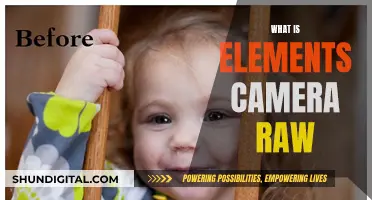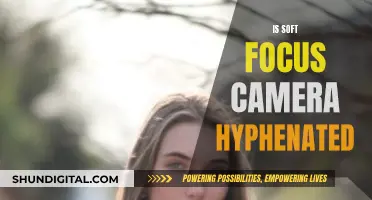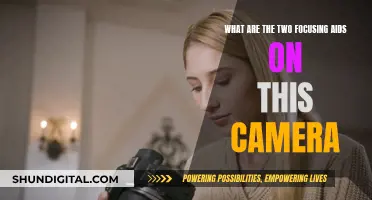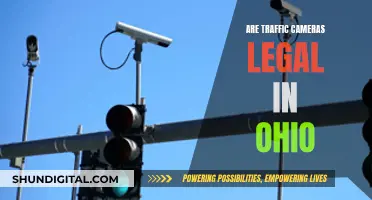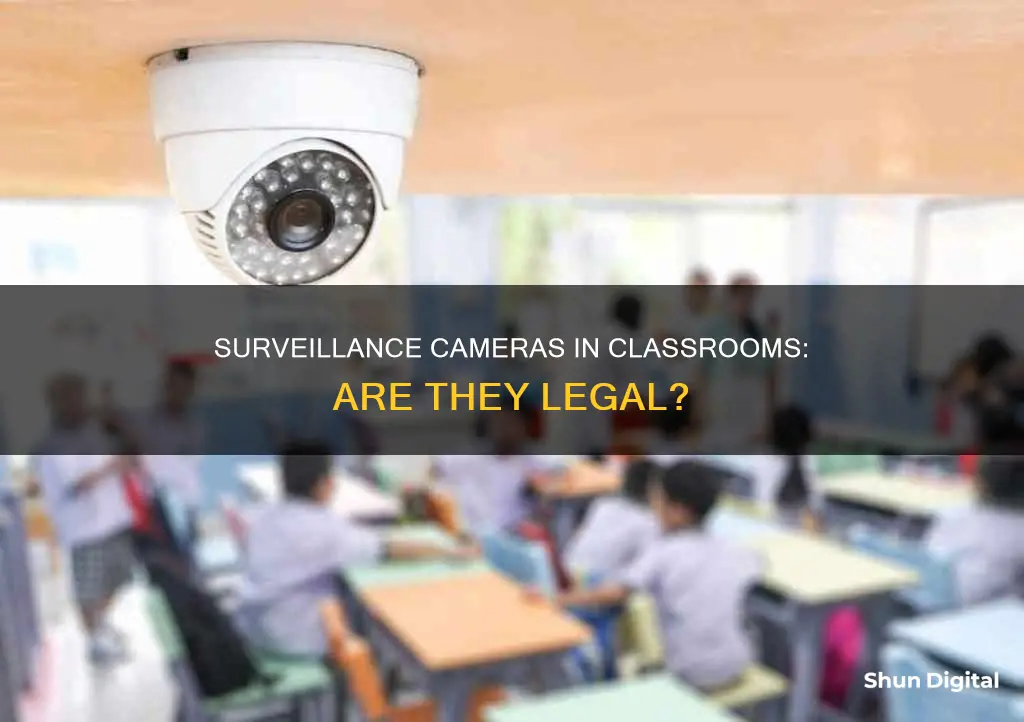
The use of surveillance cameras in schools is a topic of debate, with some arguing that it is an invasion of privacy, while others highlight the safety benefits. While it is not universally illegal to install cameras in classrooms across the United States, there are specific state laws and school district policies that regulate their use. The placement of cameras in areas where privacy is expected, such as restrooms and locker rooms, is generally prohibited. However, in common areas such as hallways, cafeterias, and classrooms, the use of surveillance cameras is often permitted as long as certain legal considerations are met.
| Characteristics | Values |
|---|---|
| Legality | Legal in most states, but specific laws vary |
| State-specific regulations | Some states have stricter laws on hidden cameras and consent, e.g., New Hampshire, Maine, Kansas, South Dakota, and Delaware |
| Visibility | Recommended to be plainly visible to comply with laws and deter misconduct |
| Signage | Not legally required in areas without a reasonable expectation of privacy, but may be included as a deterrent |
| Parental consent | Generally not required, but some states, like Texas, may require it for purposes other than education or safety |
| Privacy | Cannot be placed in areas where privacy is expected, such as restrooms, locker rooms, and private offices |
| Audio recording | Federal laws forbid audio recording without consent; if cameras have audio capabilities, steps should be taken to ensure they are switched off |
What You'll Learn

Surveillance cameras in classrooms are legal in some states, but not all
The legality of surveillance cameras in classrooms is a complex issue that varies across different states and regions in the United States. While it is not universally illegal to have cameras installed in classrooms, the specific laws and regulations governing their use can differ significantly from one state to another. The key consideration is balancing the need for security and student safety with the privacy rights of students and teachers.
In general, security cameras are permissible in areas where there is no "reasonable expectation of privacy." This includes common areas such as hallways, cafeterias, and outdoor spaces. However, when it comes to classrooms, the line becomes blurred as students and teachers may have a higher expectation of privacy in their learning environment.
Some states, like Texas, have strict laws prohibiting any video or audio recording in spaces where there is a reasonable expectation of privacy, which often includes classrooms. In these states, the covert installation of hidden cameras or continuous recording without consent is illegal. Other states, such as Florida, permit the use of surveillance equipment in classrooms to improve safety, but prohibit audio recording without the consent of all parties.
To navigate these complexities, schools must ensure they are aware of and compliant with their state's specific regulations. They should also establish clear policies and guidelines regarding the use of surveillance cameras, including obtaining proper consent from administrators, teachers, parents, and students. Visible placement of cameras and signage disclosing their use can also help address privacy concerns.
While the benefits of classroom surveillance include improved safety, incident prevention, and documentation, it is essential to carefully consider the potential drawbacks, such as privacy concerns, implementation costs, and the potential for misuse or misunderstanding. Ultimately, the decision to install cameras in classrooms rests with the school district, but it should be made with careful consideration of the legal, ethical, and practical implications.
Focusing Your Camera: A Challenging Task?
You may want to see also

Consent is required for hidden cameras in some states
While it is generally legal to have security cameras in schools, there are some states that require consent for the use of hidden cameras. These states include New Hampshire, Maine, Kansas, South Dakota, and Delaware. These states have stricter laws regarding hidden surveillance cameras and require consent for their use.
In addition to these states, there are also varying laws and regulations governing the use of security cameras in schools. For example, Texas requires parental consent if the recordings are for purposes other than education or safety. It is important for schools to be aware of their state's specific regulations and to comply with them.
The visibility of security cameras is another important consideration. While it may not be mandatory in all states, it is generally recommended to install cameras in locations where they are plainly visible. This can serve as a deterrent against undesirable behavior and help to comply with state laws.
To respect the privacy of students and staff, schools should avoid placing cameras in areas where privacy is expected, such as bathrooms, locker rooms, and private offices. By following these guidelines and complying with state regulations, schools can effectively use security cameras to enhance safety and security on campus.
Fight Colorado Camera Ticket: Know Your Legal Rights
You may want to see also

Cameras in private spaces like bathrooms are illegal
The use of surveillance cameras in schools is a complex issue that requires a delicate balance between security and privacy concerns. While it is generally legal to have security cameras in schools, there are specific laws and regulations governing their placement and use.
One important consideration is the "reasonable expectation of privacy". In areas where individuals have a reasonable expectation of privacy, such as bathrooms, locker rooms, and changing areas, the use of surveillance cameras is illegal. These spaces are considered private, and installing cameras in these areas would violate privacy rights.
In the United States, several states have implemented laws to protect privacy in these private spaces. For example, Alabama, California, and Massachusetts have laws that specifically prohibit the use of video cameras in bathrooms and other private places. Other states, such as Arizona and Connecticut, require employers to provide written notices and obtain consent before installing cameras in restrooms and other private spaces.
To ensure compliance with the law and respect for privacy, schools should establish clear policies regarding the use of surveillance cameras. This includes seeking legal advice, obtaining consent, and providing proper notifications to students, staff, and parents.
In summary, while security cameras can be beneficial for enhancing safety and security in schools, it is crucial to respect the privacy of individuals in private spaces. Cameras in private spaces like bathrooms are illegal, and schools must be mindful of this when implementing surveillance measures.
Fine-Tuning Your P4P Camera Focus: Tips and Tricks
You may want to see also

Parental consent may be needed for non-safety recordings
While it is generally legal to have security cameras in schools, there are some instances where parental consent may be needed for non-safety recordings. This is because, in some states, schools are only permitted to record students for safety and educational purposes without obtaining parental permission.
For example, in Texas, parental consent is required if the recordings are intended for purposes other than education or safety, such as for promotional materials. In this case, schools must make parents aware of their surveillance policy and request signed consent forms. This ensures that parents are informed and consent to the use of recordings for specific purposes.
To navigate the legal and ethical considerations of classroom surveillance, schools should develop and adhere to clear policies. This includes respecting privacy boundaries, such as avoiding areas where privacy is expected like restrooms and locker rooms. Additionally, schools should consider the visibility of cameras, signage disclosing their use, and educating stakeholders about the surveillance program.
By following these guidelines and seeking legal advice when needed, schools can ensure they are operating within the scope of legality and maintaining the trust of parents, students, and staff.
Coolpix Cameras: CMOS Battery Power Source?
You may want to see also

Visible cameras act as a deterrent
While the use of surveillance cameras in schools is generally legal, the visibility of these cameras is an important consideration. In most states, it is recommended to install cameras in locations where they are plainly visible. This serves two purposes: firstly, it helps to comply with state laws, and secondly, it acts as a visible deterrent against undesirable behaviour.
Visible security cameras can help to prevent incidents by deterring misconduct. This is especially important in classrooms, where students may be more likely to engage in disruptive behaviour when they believe they are not being watched. By making cameras visible, schools can encourage better behaviour and create a safer learning environment.
In addition to deterring misconduct, visible cameras can also provide valuable documentation if any issues do arise. This can aid in investigations and help school administrators take appropriate action. For example, in the event of bullying or harassment, the presence of security cameras can provide hard evidence to support any claims made.
It is worth noting that while visible cameras can be a effective deterrent, they may not always be mandatory. In some states, such as Texas, parental consent may be required if the recordings are for purposes other than education or safety. Therefore, it is crucial for schools to understand the specific regulations and laws regarding the use of surveillance cameras in their state.
Traditional Cameras: Still Relevant or Obsolete?
You may want to see also
Frequently asked questions
It is not universally illegal in the US to have cameras installed in classrooms. However, specific state laws and individual school district policies regulate their use, balancing safety and privacy.
Surveillance cameras in classrooms can improve safety and security, prevent incidents, and aid investigations. They can also provide peace of mind for parents, knowing that there are measures in place to ensure their children's safety during school hours.
The constant surveillance of students and teachers may raise privacy concerns. There are also financial implications, including setup costs and maintenance expenses. Additionally, there is a risk of cameras being misused or misunderstood, leading to concerns about inappropriate access to footage or its use for unintended purposes.
Schools must comply with state-specific regulations regarding surveillance. Some states have stricter laws governing hidden cameras, requiring consent for their use. Visible cameras installed in areas without a reasonable expectation of privacy, such as classrooms, are generally permitted. However, audio recording laws must also be considered, as federal laws forbid recording individuals without their consent.
Schools should ensure visible camera placement, respect privacy boundaries, educate stakeholders about the surveillance policy, and implement measures to secure recorded data. It is also essential to obtain proper consent from administrators, teachers, parents, and students.


